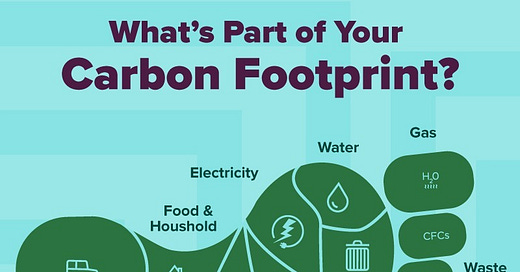Some years ago, the Vice Principal at the Elementary School, a few blocks away from my church site, telephoned me to say, “I’m teaching a Carbon Footprint Workshop at the school and I am inviting you and any of the families at your church to join us. I know that your congregation includes large families and so I think that they could benefit from the workshop.” I knew the Vice Principal, having cold-called him a few years prior to his phone call and so, I agreed to attend his workshop but I also met with him in his office prior to the event. His advertising of the event included a cameo of a Japanese couple, who had purchased in the Tokyo metro a tiny home of 700 square feet. In our private meeting I applauded him for his arranging of the workshop. But I also did some math with him.
I introduced the crunching by mentioning the Japanese couple: “So, this Japanese couple shares 700 square feet and so their carbon footprint would be calculated by 350 square feet per person.” He agreed that this is the way the carbon footprint for households is calculated. I then said, “My large family of seven lives in a 2,100 square foot home and so our carbon footprint per person is 300 square feet per person. This is a bit smaller of a footprint than this Japanese couple.” He reluctantly agreed. Then I said, “I know that you and your partner live in a home together. Do you mind telling me how many square feet you have in your home?” He reluctantly told me that their home was 4,300+ square feet. That would be 2,150 square feet per person. I was a bit punchy in the meeting and so I pushed him to agree that a larger family sharing the BTU’s in a home half the size of his home shared with his partner, might have a smaller carbon footprint than his own. I sat all three hours in his workshop.
The reason I was so punchy with him was that some years before this conversation, he was one of the few individuals, who called me a “breeder” to my face, having discovered that my wife and I had five children. My wife and I were raised in poor families, who were well-practiced in economically frugal and environmentally sound practices out of necessity. My parents were hippies, who composted, never dreaming of dumping garbage into bins to be collected weekly. We did not drink beverages in plastic or glass containers and we donned sweatshirts before we turned up the heat. We turned off lights in rooms unoccupied and we bought local products as often as possible. We hand-made Christmas and Birthday gifts, sewed our clothes and walked everywhere. We tent camped for vacation unable to afford flights to Hawaii or stays in resorts, let alone cruises in the Caribbean. We were instructed to use the outhouse to decrease the number of flushes into the public sewer and we washed and re-used plastic bags and never bought paper towels. Our carbon footprint was minuscule.
When Glenda and I started to raise our five children, we followed suit mainly because it was the lifestyle we knew. We added to the reduction of our carbon footprint. We grow as much of our food as possible. We eat more beans and rice than beef from farting bovine. Our primary shopping occurs at Thrift Stores. We carpool and use public transportation. We walk everywhere. Our carbon footprint righteousness is impeccable . We use batteries sparingly. We don’t buy from China. We don’t invest in Bitcoin - a huge energy suck! We buy local. We don’t buy much at all. We don’t own and operate recreational vehicles. We don’t golf or downhill ski. We are the ideal, smaller than normal footprint heroes looking down on all of you wasteful consumers, who eat fast food and frequent venues for pop-rock concerts and rodeos and monster truck extravagances.
To be fair, be reassured that we are fully aware that the ice age is over. Global warming is a natural cycle beyond our personal consumerism. Our family’s frugality is not so much driven by global warming hype as it is by prudent lifestyle of our own choice to be environmentally viable. By choice we desire to be something other than gluttons. We value conservation and believe that the planting of more trees on planet earth is good for us all. We personally prefer neighbors operating local businesses to big box monstrosities like Walmart, Amazon and Home Depot. The truth of the matter is that we can afford to do so.
This is the elephant in the room: Most of us can afford to be frugal. We can afford to choose environmentally sound purchases. So many of us are alarmed at rising costs of living but we still fuel our RV’s and smaller recreational vehicles. We still buy at Costco. We still go on cruises. We still pay our children’s athletic fees and college tuition. We still fly to Vegas and gamble on the future. We still pay for Yoga, Health Clubs and Golf fees. We still pay HOA and Time Share fees. We still pay for streaming and online apps. We still invest in the Stock Market and pay life insurance premiums. We still insist that most of these costs are necessities rather than preferential choices.
Our carbon footprints rival Bigfoot… who may not exist.



